
Old Spanish Trail
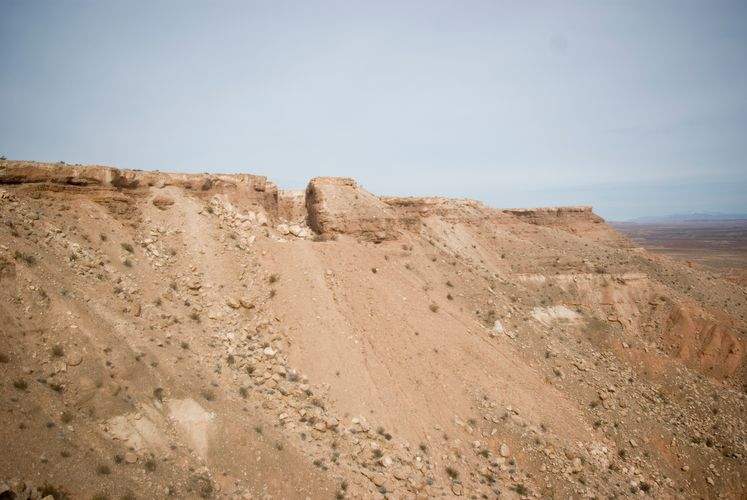
Old Spanish Trail: Mormon Mesa.
"IMGP6189" by Robert Wilk is licensed under CC BY-NC 2.0
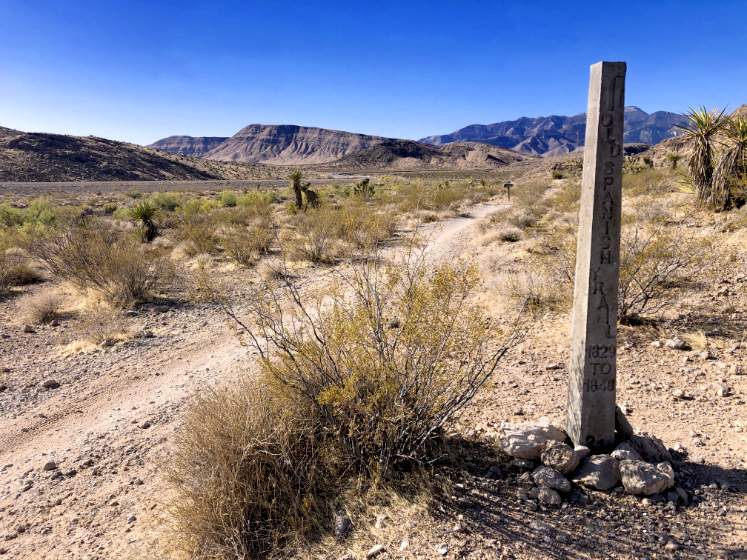
Old Spanish Trail: Blue Diamond.

Old Spanish Trail: Stump Spring.
Slide of Stump Springs, Nevada, circa 1960s - 1983 . Elbert Edwards Photograph Collection. UNLV Libraries Special Collections & Archives.
.jpg)
Old Spanish Trail: near the junction of Interstate 15 and State Route 169.
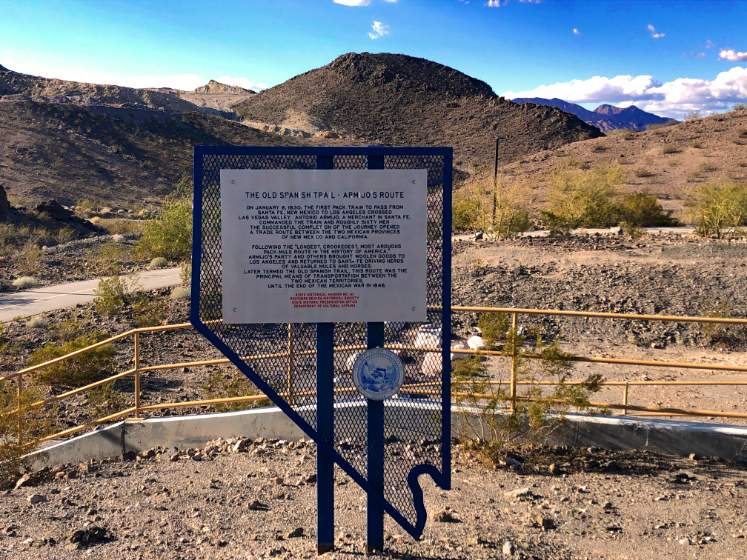
Old Spanish Trail: near Lake Mead.
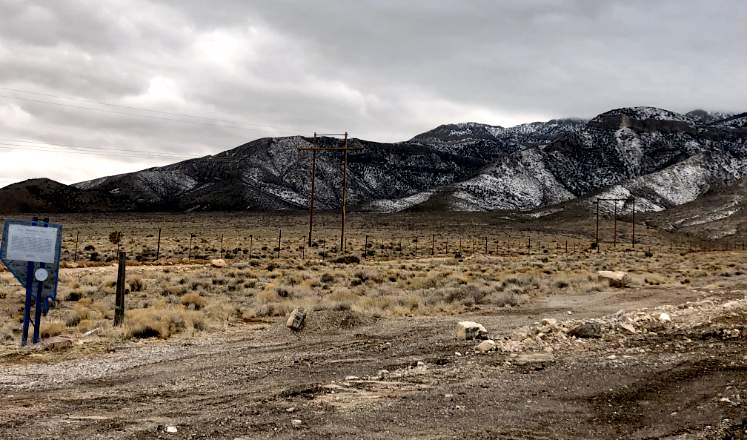
Old Spanish Trail: Mountain Springs Pass.
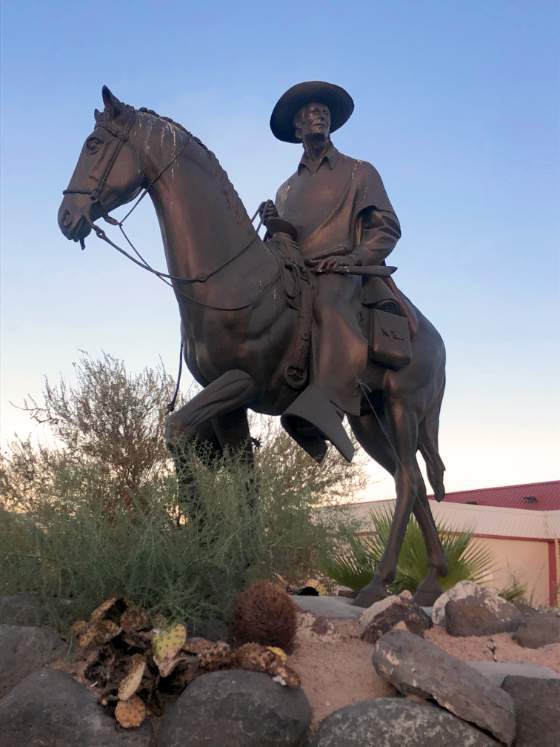
Rafael Rivera. The statue is currently located at 2900 Stewart Avenue, Las Vegas, Nevada.
"Stretching for 130 miles across Clark County, this historic horse trail became Nevada’s first route of commerce in 1829 when trade was initiated between Santa Fe and Los Angeles. The trail was later used by the wagons of the “49ers” and by Mormon pioneers. Concrete posts marking the trail were erected in 1965."
(Nevada Historical Markers 31, 32, 33, 34)
"Early Spanish traders named the fifty-five dry miles separating Las Vegas and the Muddy River the Journada Del Muerto (Journey of The Dead Man). This longest stretch without water along the Old Spanish Trail was littered with the skeletons of animals and parts of wagons abandoned along the sandy desert. Most experienced travelers made the trip at night.
John C. Frémont crossed the Journada in 1844 and commented: “We ate the barrel cactus and moistened our mouths with the acid of the sour dock. Hourly expecting to find water, we continued to press on to midnight, when after a hard and uninterrupted march of 16 hours, our wild mules began running ahead; and in a mile or two we came to a bold running stream (the Muddy River)."
(Nevada Historical Marker 139)
"On January 8, 1830, the first pack train to pass from Santa Fe, New Mexico to Los Angeles crossed Las Vegas Valley. Antonio Armijo, a merchant in Santa Fe, commanded the train and roughly sixty men. The successful completion of the journey opened a trade route between the two Mexican provinces of New Mexico and California.
Following the “longest, crookedest, most arduous pack mule route in the history of America,” Armijo’s party and others brought woolen goods to Los Angeles and returned to Santa Fe driving herds of valuable mules and horses. Later termed the Old Spanish Trail, this route was the principal means of transportation between the two Mexican territories, until the end of the Mexican War in 1848."
(Nevada Historical Marker 141)
"This portion of the Old Spanish Trail [Mountain Springs Pass] was discovered in January 1830, by Antonio Armijo during his first trip from Santa Fe to Los Angeles. The springs just north of this marker provided excellent water and fed meadows of luxuriant grass for draft animals. Two days were required to travel between Las Vegas and Mountain Springs Pass. The trip was broken at Cottonwood Springs, the site of Blue Diamond, where an early start was usually made in order to climb the pass by nightfall. Early travellers often referred to the area as Paiute Springs, but the present title has been used for over a century. The altitude made Mountain Springs one of the favorite camping spots on the trail."
(Nevada Historical Marker 115)
"This part of the Old Spanish Trail connected Las Vegas Springs to Red Rock Canyon with its Cottonwood Springs and other water sources. The trail then led over Mountain Pass and into Pahrump Valley, then to Stump Springs at the state line and California. When the Salt Lake, Los Angeles and San Pedro Railroad opened the railroad line through Las Vegas in 1905, it took the flatter course generally followed today by Interstate 15.
This particular patch of ground was a dry and uninteresting piece of desert to be passed over quickly on the way to water either at Las Vegas Springs or Cottonwood Springs. Originally wagons were not used on the trail; travelers and traders usually walked, sometimes riding horses, and used mules to carry their goods."
(Clark County Parks)
"This historical marker commemorates the valor and service of pioneer scout Rafael Rivera, the first caucasion of record to view and traverse Las Vegas Valley. Scouting for Antonio Armijo’s sixty-man trading party from Abiquiu, N.M. In January 1830, young Rivera ascended Vegas wash twenty miles east of this marker [South Mountain Vista Street and East Russell Road] and blazed a route to the Mojave River in California by way of the Armargosa River.
Rivera’s pioneering route became a vital link in the Old Spanish Trail, with Las Vegas Springs a most essential stop on this popular route to Southern California. John C. Frémont mapped the trail in 1844. Three years later, following an extension of the course to Salt Lake Valley, the route became known in this area as the Mormon Trail. Today the Old Spanish Trail closely parallels Inter-state route #15."
(Nevada Historical Marker 214)
Listed on the National Register of Historic Places in 2001 (segments: Mormon Mesa, Blue Diamond, Stump Spring).
Listed as a National Historic Trail in 2002.
Listed on the National Register of Historic Places in 2008 (boundary increase: northwest near the junction of Interstate 15 and State Route 169).
Listed as a U.S Historic District.